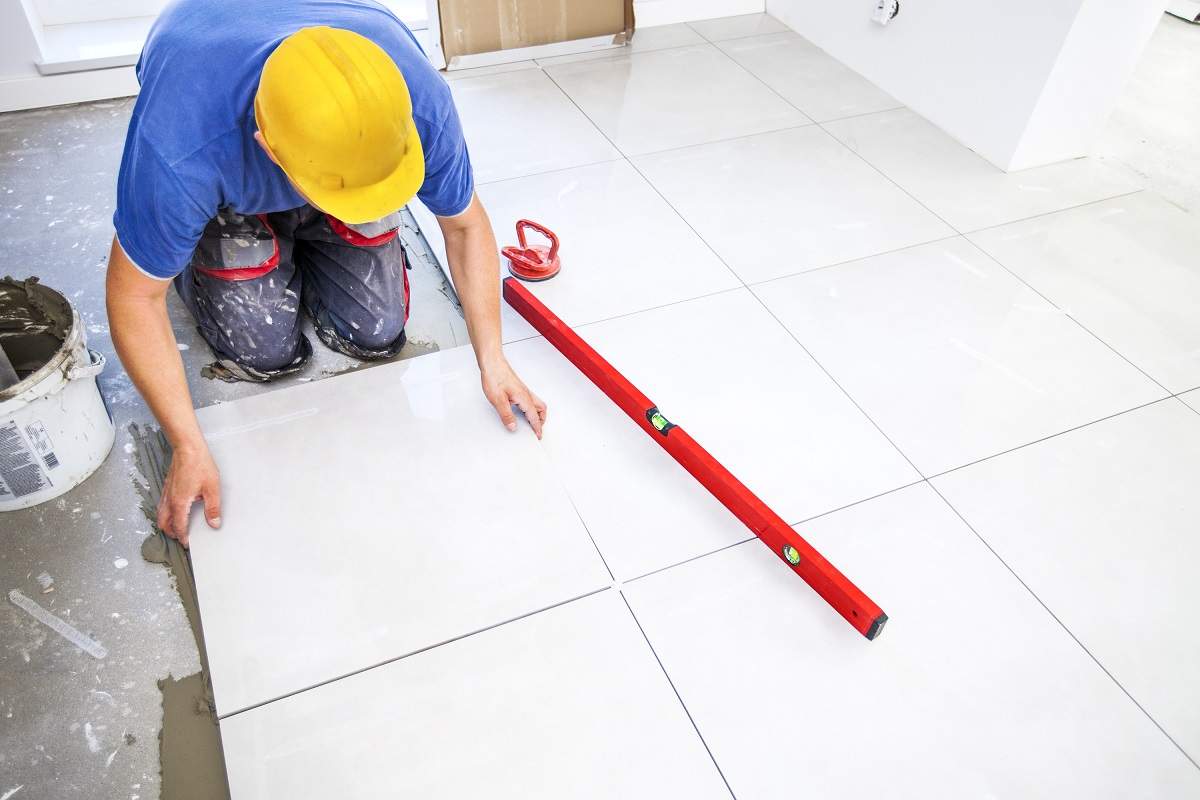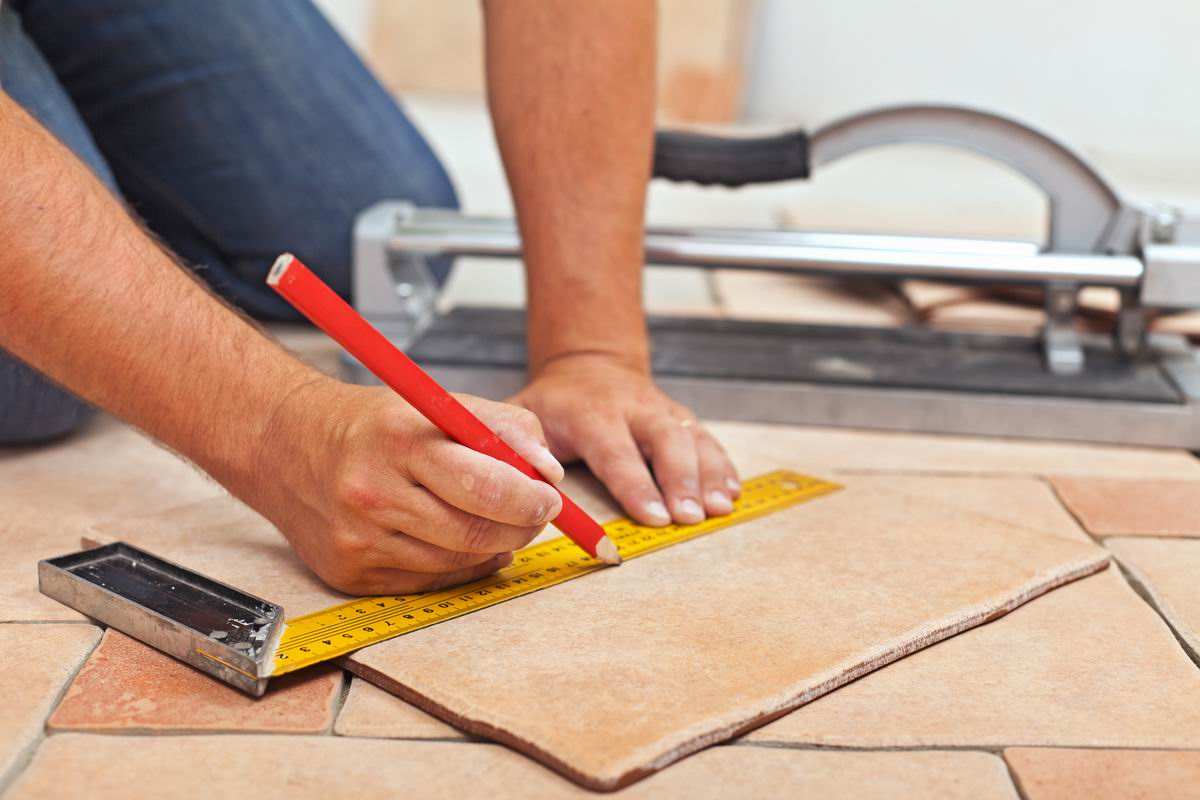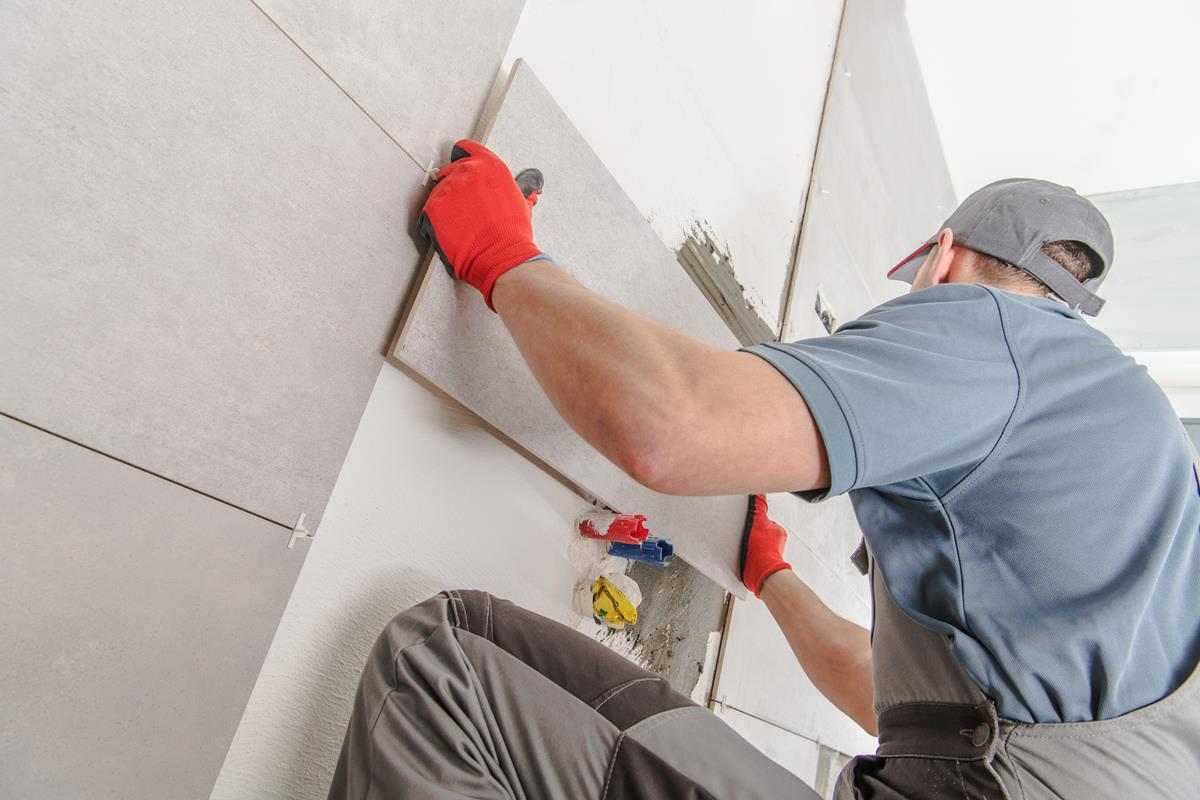For installation large format tiles, some basic rules are needed, for example the best adhesive must be selected to ensure that the tiles will remain well bonded over time, prevent the tiles from becoming deformed, and provide the highest possible level of dependability wherever they are installed (on walls or floors and internally or externally.) Following is a description of a few of the most important ideas that need to be considered when designing a tile installation and then adhered to all the way through the phase of actually installing the tiles. This description takes into account what is required and mandated by the most recent standards and regulations.  The first step in the process of tiling involves checking that the substrate is crack-free, flat, clean, uniformly cured, and dry before beginning the installation of the tiles. When placing tiles, the grout lines have to be a minimum of 2 millimeters broad. The width of the grout lines needs to be decided based on the environment, the anticipated area of usage, the size of the tiles, and the type of substrate, and it may need to be raised if it is judged to be insufficient. Grout lines are particularly important when installing big format tiles for the following reasons: they mitigate the effect of out-of-flatness between the tiles; they greatly reduce the modulus of elasticity and, as a result, the rigidity of the tiling. In point of fact, when tiles are installed and butted against one another, tiling is virtually identical to a single continuous tile that is stiff. When tiles are laid with grout lines, the modulus of elasticity of the tiled surface is decreased. This is due to the fact that the grout has a substantially lower modulus of elasticity than the tiles themselves do. Because of this, a surface that has grout lines is able to track the various movements that occur between the substrate and the tiling as a result of settling in the building, hygrometric shrinkage, thermal expansion, and other factors. This helps to prevent the formation of dangerous stresses that could potentially lead to tile detachment. In addition to being organized in the same way as structural joints, distribution joints need to be incorporated into the design. When installing tiles on interior surfaces, a space of 25 square meters must be set up for perimeter deformation joints and distribution joints at regular intervals. Before tiling any external surfaces, you are required to first construct pitch spaces with a maximum surface area of 9 to 12 m2. Selecting the appropriate adhesive is necessary in order to guarantee that a tiled surface will continue to be stable and dependable over the course of time.
The first step in the process of tiling involves checking that the substrate is crack-free, flat, clean, uniformly cured, and dry before beginning the installation of the tiles. When placing tiles, the grout lines have to be a minimum of 2 millimeters broad. The width of the grout lines needs to be decided based on the environment, the anticipated area of usage, the size of the tiles, and the type of substrate, and it may need to be raised if it is judged to be insufficient. Grout lines are particularly important when installing big format tiles for the following reasons: they mitigate the effect of out-of-flatness between the tiles; they greatly reduce the modulus of elasticity and, as a result, the rigidity of the tiling. In point of fact, when tiles are installed and butted against one another, tiling is virtually identical to a single continuous tile that is stiff. When tiles are laid with grout lines, the modulus of elasticity of the tiled surface is decreased. This is due to the fact that the grout has a substantially lower modulus of elasticity than the tiles themselves do. Because of this, a surface that has grout lines is able to track the various movements that occur between the substrate and the tiling as a result of settling in the building, hygrometric shrinkage, thermal expansion, and other factors. This helps to prevent the formation of dangerous stresses that could potentially lead to tile detachment. In addition to being organized in the same way as structural joints, distribution joints need to be incorporated into the design. When installing tiles on interior surfaces, a space of 25 square meters must be set up for perimeter deformation joints and distribution joints at regular intervals. Before tiling any external surfaces, you are required to first construct pitch spaces with a maximum surface area of 9 to 12 m2. Selecting the appropriate adhesive is necessary in order to guarantee that a tiled surface will continue to be stable and dependable over the course of time.  Before deciding on the most effective adhesive, it is necessary to have a comprehensive understanding of the following factors: the variety of tiles that will be installed, their size, the substrate on which they will be mounted, the area in which they will be utilized, etc. In line with the EN 12004 rules, which must also be taken into consideration, the use of class C2 adhesives is required since porcelain has an almost nonexistent absorption rate, and the obligation to strengthen mesh where it is appropriate. When working with large formats, it is strongly recommended to make use of highly deformable materials from class S2 according to EN 12004; nevertheless, when working with medium sizes, it is preferable to make use of deformable adhesives from class S1 according to EN 12004. In line with EN 12004, it is recommended to make use of adhesives of the class "E" variety, which have a longer open time. This is the case when working in hot climates or during stormy weather (strong gusts, etc.). Tiles must always be installed when the adhesive is still wet, also known as while it is still within its "open time," so that sufficient glue can be transferred onto the back of the tile during the installation process. In line with EN 12004, it is recommended that rapid-setting adhesives of class "F" be used when installing tiles during the winter or in locations with a low average temperature. In point of fact, these adhesives harden completely and establish high degrees of adhesion quickly after application. Because of this, the mixing water does not freeze overnight when temperatures are below freezing.
Before deciding on the most effective adhesive, it is necessary to have a comprehensive understanding of the following factors: the variety of tiles that will be installed, their size, the substrate on which they will be mounted, the area in which they will be utilized, etc. In line with the EN 12004 rules, which must also be taken into consideration, the use of class C2 adhesives is required since porcelain has an almost nonexistent absorption rate, and the obligation to strengthen mesh where it is appropriate. When working with large formats, it is strongly recommended to make use of highly deformable materials from class S2 according to EN 12004; nevertheless, when working with medium sizes, it is preferable to make use of deformable adhesives from class S1 according to EN 12004. In line with EN 12004, it is recommended to make use of adhesives of the class "E" variety, which have a longer open time. This is the case when working in hot climates or during stormy weather (strong gusts, etc.). Tiles must always be installed when the adhesive is still wet, also known as while it is still within its "open time," so that sufficient glue can be transferred onto the back of the tile during the installation process. In line with EN 12004, it is recommended that rapid-setting adhesives of class "F" be used when installing tiles during the winter or in locations with a low average temperature. In point of fact, these adhesives harden completely and establish high degrees of adhesion quickly after application. Because of this, the mixing water does not freeze overnight when temperatures are below freezing.  In circumstances in which surfaces need to be immediately returned to use, rapid adhesives are another solution that is recommended. Always apply the glue using the double-buttering method, which requires using a spreader with notches that ensure the back of the tile is almost entirely wetted in order to apply adhesive to both the substrate and the back of the tile. This method is required because the back of the tile must be almost entirely wetted before the adhesive can be applied. It is essential and vital to use double-buttering in order to prevent issues brought on by gaps in the back of the tiles, which, in the case of outdoor tiling, could result in rainwater accumulation and, in the case of freezing conditions, produce tensions that could cause the tiles to crack or become detached. These issues could be avoided by using double-buttering. Additionally, double-buttering is essential so that pressures can be distributed more evenly across a wider region. Differential motions between the substrate and the tiling, such as those generated by changes in temperature in the case of outdoor tiling, are the root cause of these tensions. After installation, the tiles need to have a light tapping done all over the surface. This is done to prevent the formation of air pockets between the back of the tile and the substrate.
In circumstances in which surfaces need to be immediately returned to use, rapid adhesives are another solution that is recommended. Always apply the glue using the double-buttering method, which requires using a spreader with notches that ensure the back of the tile is almost entirely wetted in order to apply adhesive to both the substrate and the back of the tile. This method is required because the back of the tile must be almost entirely wetted before the adhesive can be applied. It is essential and vital to use double-buttering in order to prevent issues brought on by gaps in the back of the tiles, which, in the case of outdoor tiling, could result in rainwater accumulation and, in the case of freezing conditions, produce tensions that could cause the tiles to crack or become detached. These issues could be avoided by using double-buttering. Additionally, double-buttering is essential so that pressures can be distributed more evenly across a wider region. Differential motions between the substrate and the tiling, such as those generated by changes in temperature in the case of outdoor tiling, are the root cause of these tensions. After installation, the tiles need to have a light tapping done all over the surface. This is done to prevent the formation of air pockets between the back of the tile and the substrate.  This operation is particularly important to do on exterior tiling in order to reduce the likelihood of stresses being caused by the condensation of water vapor that takes place as a result of variations in temperature. Our professional exporting team would be glad to cooperate with all traders and importers from anywhere on earth.
This operation is particularly important to do on exterior tiling in order to reduce the likelihood of stresses being caused by the condensation of water vapor that takes place as a result of variations in temperature. Our professional exporting team would be glad to cooperate with all traders and importers from anywhere on earth.
💰 Tenfold your income 💎
